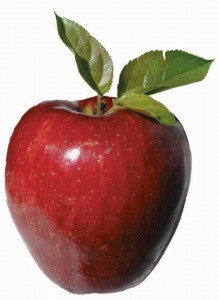The U.S. Department of Agriculture (USDA) issued the Food Guide Pyramid as a guide
to eating a balanced diet. Since each food group in the pyramid provides some — but not all — of the daily nutrients needed for good health, you need to eat foods from all of the groups. The pyramid divides foods into five groups with recommended servings from each group. How much food you need each day depends upon your gender, age, physical condition, and activity level. Most people need at least the minimum number of servings from each group every day.
Healthy eating starts with the food you buy. Before you shop, use the Food Pyramid to plan meals and make a shopping list. Buy only the items on your shopping list. Don’t go shopping when you’re hungry, so you won’t be tempted to buy snack foods and other high-fat foods. Stock your kitchen with a variety of foods that are low in fat, salt, and sugar. Buy foods high in dietary fiber by reading food labels and by using the food labels to
compare foods that are similar.
The food pyramid can be very helpful when planning meals or making a shopping list. Most of the foods on your menu/list should come from the bottom of the pyramid. Foods from the top of the pyramid should make up a very small part of your menu/list.
Use the pyramid pattern on the opposite page to make a daily food diary. Then, record what you eat for several days by completing blanks on the pyramid. A food diary will help you learn the foods you like, the foods you are missing from your diet, and how much variety you have in your diet.
The DASH Diet
The DASH diet is an example of how the Food Pyramid can be used to eat a heart healthy diet and help lower blood pressure, based on a 2000 calorie diet. It contains the number of servings from each of the food groups shown in the table below. Depending on your caloric needs, the number of servings may vary.
Eating for a Healthy Heart
Antioxidants
Studies show that vitamin E, vitamin C, folic acid and beta carotene may slow up or stop plaque buildup in the arteries. Ask you doctor or dietician the best way to get these nutrients.
Fat and Cholesterol
Cholesterol is carried around in the blood by proteins. HDL (high density lipoprotein) is “good cholesterol.” It removes cholesterol from the blood and artery plaque. LDL (low density lipoprotein), or “bad cholesterol,” increases plaque. Triglycerides are another type of “bad” blood fat.
Ask your doctor about your blood levels of fat and cholesterol. He or she can give you goals to
reach and keep. Many people can reach these goals with a low-fat, low-cholesterol diet. You may also need a drug that lowers cholesterol or triglycerides.
Low-fat, Low-cholesterol Diet
A diet high in fat and cholesterol adds to the fat and cholesterol made by your body. Excess
fat and cholesterol moving in the blood can travel into the artery walls and form plaque. High levels of triglycerides can lead to more plaque.
A low-fat, low cholesterol diet is a “must” after a heart attack. The many fat-free food
products make it much easier to eat right. But avoid foods high is sugar and calories.
The American Heart Association recommends the following low-fat, low cholesterol diet:
To follow this diet, you must figure out your maximum daily fat and saturated fat intake in terms of grams. You need to know the number of grams because food labels report the fat content of foods in terms of grams.
The following formulas will show you how to calculate the maximum total grams of fat you should eat each day. For our example, let’s assume you eat a 2,500-calorie diet each day. Also, we know there are 9 calories in each gram of fat.
2,500 X .30 = 750 9 = 83.3
calories calories total grams
a day from fat of fat
per day
2,500 X .10 = 250 9 = 27.8
calories calories from total grams
a day saturated fat of saturated fat per day
Now, every time you eat a food, read the nutrition facts label and write down the number of grams of fat, saturated fat, and cholesterol in that food. At the end of the day, add up how much fat, saturated fat, and cholesterol you have had. Are they less that the recommended maximum? If not, cut back on foods that contain fat and cholesterol.
Low-Salt (Sodium)
